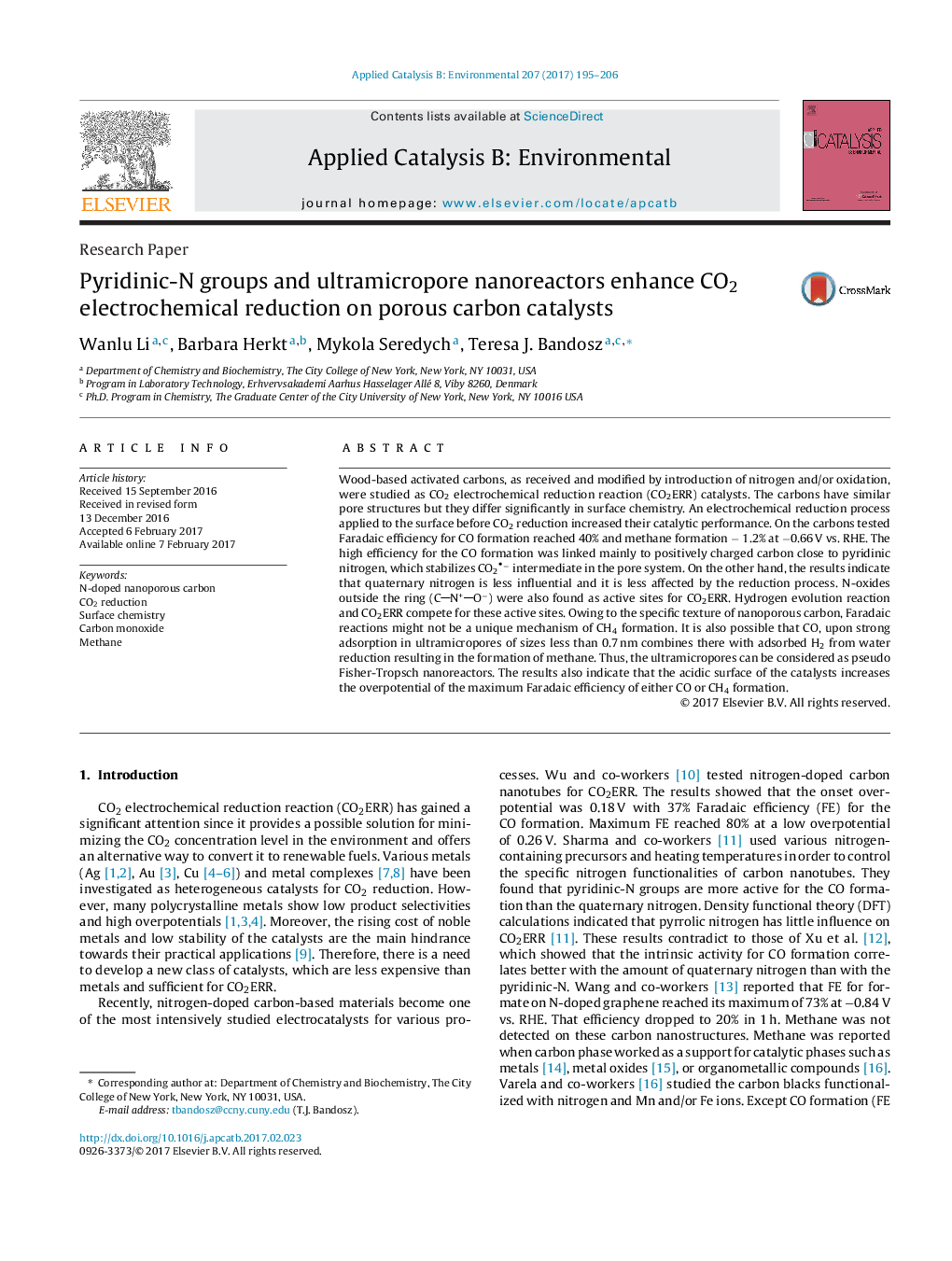| کد مقاله | کد نشریه | سال انتشار | مقاله انگلیسی | نسخه تمام متن |
|---|---|---|---|---|
| 6454064 | 1418813 | 2017 | 12 صفحه PDF | دانلود رایگان |

- CO2ERR on nanoporous carbons depends on N-containing functional groups.
- FE for CO formation reached 40%. CH4 was also detected.
- Pyridinic-N is more influential than quaternary-N for CO2ERR and CO formation.
- Acidic surface increases the overpotential of the max FE for CO or CH4 formation.
- Confined pore space works as pseudo Fisher-Tropsch nanoreactors for CH4 formation.
Wood-based activated carbons, as received and modified by introduction of nitrogen and/or oxidation, were studied as CO2 electrochemical reduction reaction (CO2ERR) catalysts. The carbons have similar pore structures but they differ significantly in surface chemistry. An electrochemical reduction process applied to the surface before CO2 reduction increased their catalytic performance. On the carbons tested Faradaic efficiency for CO formation reached 40% and methane formation â 1.2% at â0.66Â V vs. RHE. The high efficiency for the CO formation was linked mainly to positively charged carbon close to pyridinic nitrogen, which stabilizes CO2â intermediate in the pore system. On the other hand, the results indicate that quaternary nitrogen is less influential and it is less affected by the reduction process. N-oxides outside the ring (CN+Oâ) were also found as active sites for CO2ERR. Hydrogen evolution reaction and CO2ERR compete for these active sites. Owing to the specific texture of nanoporous carbon, Faradaic reactions might not be a unique mechanism of CH4 formation. It is also possible that CO, upon strong adsorption in ultramicropores of sizes less than 0.7Â nm combines there with adsorbed H2 from water reduction resulting in the formation of methane. Thus, the ultramicropores can be considered as pseudo Fisher-Tropsch nanoreactors. The results also indicate that the acidic surface of the catalysts increases the overpotential of the maximum Faradaic efficiency of either CO or CH4 formation.
125
Journal: Applied Catalysis B: Environmental - Volume 207, 15 June 2017, Pages 195-206